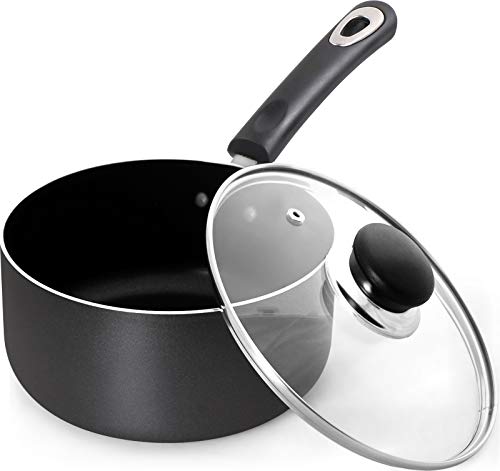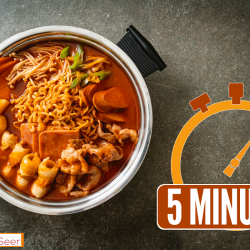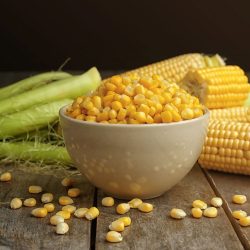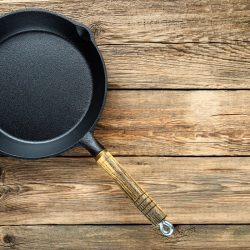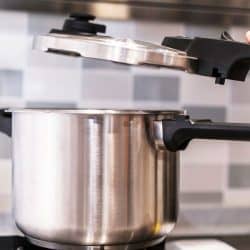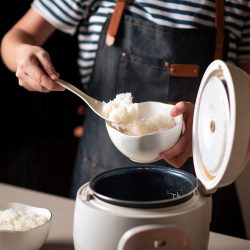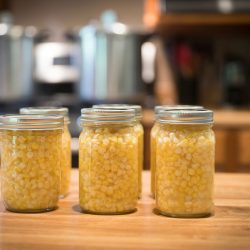You're new to cooking grits and want to know what kind of pot is best to use. We've done the research and have the answer. Keep reading to find out what you need to know about cooking grits in a pot.
Grits need to be cooked in a pot with high sides and a heavy-gauge bottom that conducts heat evenly because they require boiling then simmering for a good amount of time. The wrong pot can cause the grits to stick and burn. Regardless of the size and shape, pot materials might include stainless steel, anodized aluminum, ceramic, or even copper. Consider these types of pots for best results when cooking grits:
- Saucepan
- Saucier
- Milk pan
- Stockpot
- Slow cooker
- Instant Pot
Now, you know the basic requirements and have a list of potential pots to cook grits. We'll go into more detail to help you make your final cookware decision and suggest some of our favorite pot options. Since it takes more than the right pot to cook the perfect grits, we'll cover some general grit information to help you better know how to cook them.
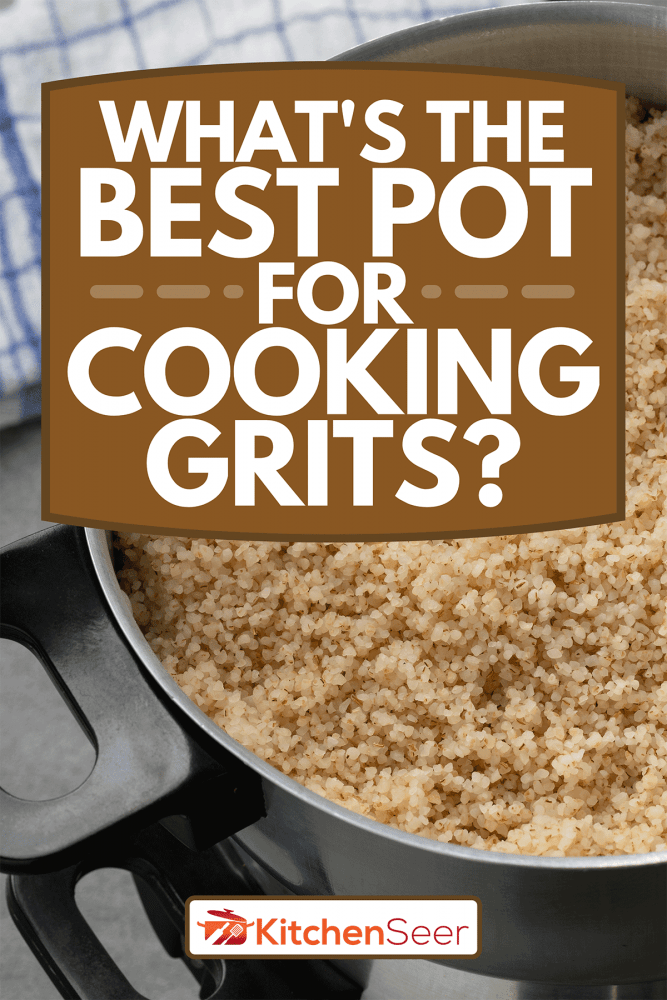
Choosing Cookware Like the Pros
When choosing the best cooking pot, you have to consider your cooktop because it can affect the performance of your cookware. Gas stovetops need cookware that heats evenly. Electric element stove tops need cookware with a completely flat bottom. Induction cooktops require that cookware has magnetic properties.
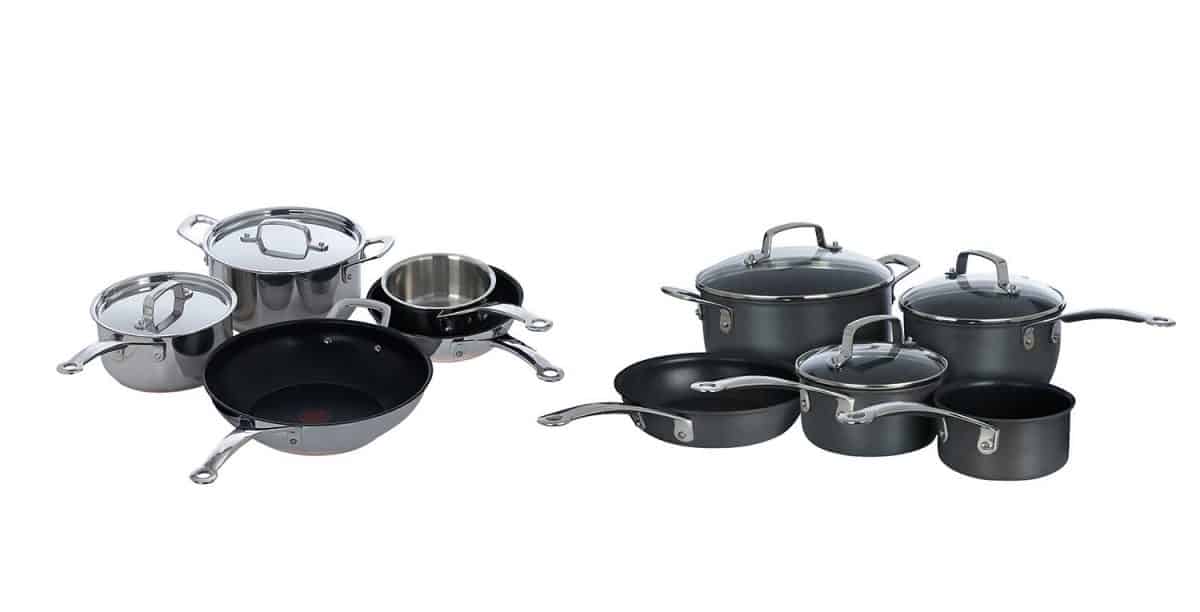
Best Types of Pots for Cooking Grits
Below is a list of common pots that you might consider for preparing grits. Your choice may depend on the amount you are cooking, method of cooking, or time available for cooking.
Saucepan
Use a saucepan mostly for foods that require liquid, like grits, especially when boiling. Typically, it has straight edges with a handle and lid. Usually, it holds two to three quarts. This aluminum saucepan by Utopia Kitchen is an excellent choice for grits because it has the added advantage of a non-stick surface to help prevent grits from sticking. Despite your best efforts, grits tend to stick, and we'll cover some other non-stick hacks below. Click here to see it on Amazon.
Sauciers
Similar to the saucepan except with curved edges, which makes stirring, whisking, and cleaning easier. This Falk Signature copper saucier is on the luxurious end of cookware but copper's ability to heat up and cool down quickly make it ideal for cooking grits. Click here to see it on Amazon.
Milk Pan
A milk pan is smaller, typically 1-quart, and traditionally used for warming milk. It is good for cooking small portions of grits prepared with all milk. The Neoflam milk pan utilizes naturally non-stick ceramic, which is durable, healthy, and environmentally friendly. Just remember to hand wash only. Click here to see it on Amazon.
Stockpots
When you need a large portion of grits, consider this commercial stainless steel Duxtop Professional 8.6-quart stockpot. High-grade stainless steel is great for heat distribution and won't react with your grits or any other food. Depending on the size of your crowd, the capacity range for stockpots averages from eight to 36 quarts. Click here to see it on Amazon.
Slow Cookers
Cooking grits in a slower cooker is the easiest method when time is plentiful. All you need to do is add the ingredients and walk away. This 8-quart Crock Pot slow cooker would be perfect for cooking grits while you are busy with other chores. Click here to find this slow cooker on Amazon.
Instant Pot
Pressure cooking reduces the traditional cook time of grits, and Instant Pots make it safe and easy. Use one when you want real grits but not the wait. If you don't already own an Instant Pot, click here to find this one on Amazon.
Types of Grits
Grits are traditional southern comfort food that originated with Native Americans who later shared with the colonists. Grits are made from ground corn, also known as maize. Different types of grits have varying preparation and storage requirements.
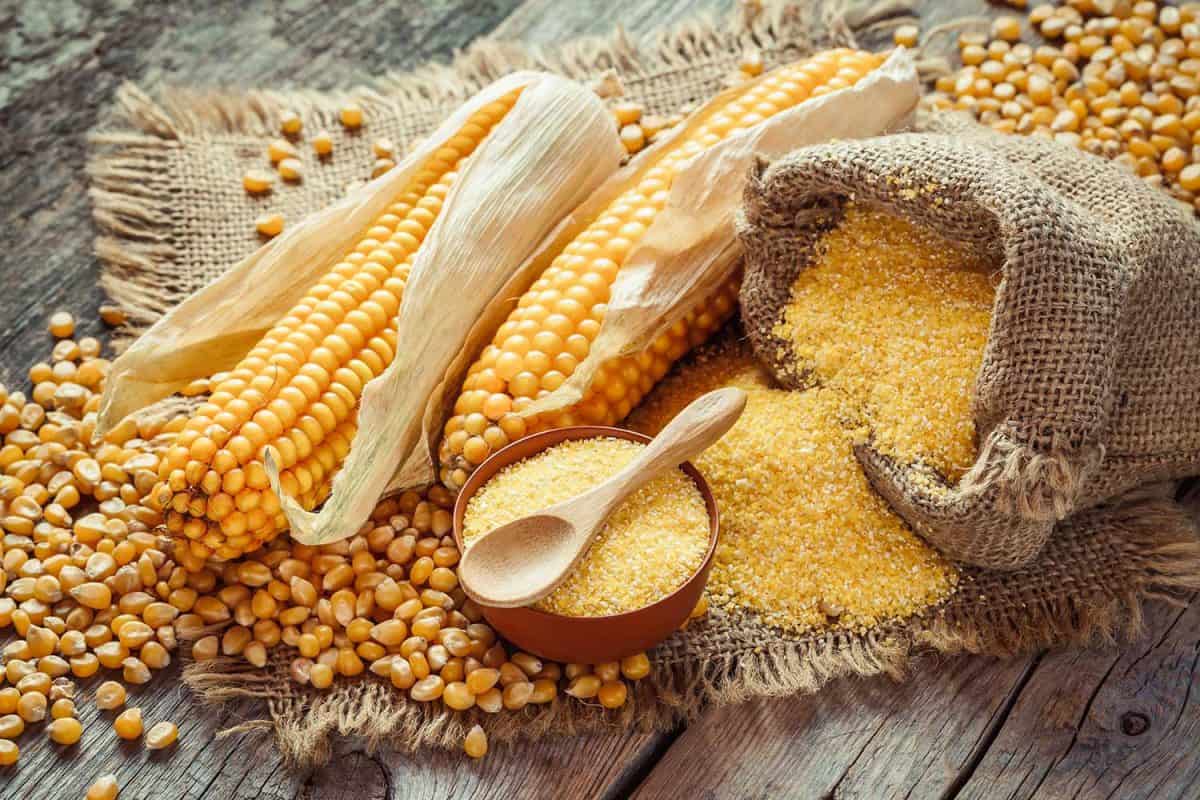
Stone-ground
Stone-ground grits are made when a stone mill and coarsely ground using dried whole corn kernels. They take the longest to cook because the dried corn pieces and starches have to be broken down, creating the creamiest texture of all grit types. Stone-ground grits have the shortest shelf life because they are closest to natural corn. They also are the most nutritious.
Try using Palmetto Farms Stone Ground Grits:
Click here to see yellow corn grits on Amazon.
Click here to see white corn grits on Amazon.
Hominy
Hominy comes from dried corn kernels that have been soaked in lye to soften the hull. The hull is then removed through rinsing and the corn is further processed to become hominy. Hominy can be eaten as whole kernels like that found in cans or ground into grits or masa.
Regular/Quick & Instant
These grits are processed to remove the hull and embryo, giving them a longer shelf life but removing most of the nutrients. Regular grits are ground into a medium consistency, while quick grits are ground finely.
Instant grits are processed like regular or quick grits. They are then precooked and dehydrated.
How to cook grits in a pot?
Grits are cooked by adding them to boiling liquid with a bit of salt. You should stir them continuously to avoid sticking. The cook time varies based on the type of grits and cooking method. Stone-ground cooked on top of the stove can take up to an hour, whereas quick grits cook in five to seven minutes. Instant grits can be cooked in a microwave in about a minute.
Once cooked, grits can be served sweet or savory. Butter is almost always added. For sweetness, add sugar or honey. Other popular ingredients to add in include cheese, shrimp, bacon, and green onions -but there is no limit. To find recipes for grits, check out FoodNetwork's recommendations.
What is the ratio of water to grits?
When using stone-ground grits, the minimum ratio of liquid to grits is 4:1. Some cooks suggest 5:1 and even 6:1 for longer cooking and creamier consistency. Also, grits will set up after cooking and cooling, so the extra liquid is helpful. Regular and quick grits use the 4:1 water ratio. If using instant grits, the ratio of water to grits is much different because the grits are already cooked. Check package instructions.
You are not limited to water only. You can use water, milk, or a combination of both. For a savory dish, use stock or broth. Regardless of the liquid, use the same ratio.
How do you keep grits from sticking to the pot?
Grits will stick. To avoid this from happening, one option is to use a non-stick pot. However, if you do not have a non-stick pot or prefer not to cook with non-stick coated cookware, there are other methods to help prevent sticking. Make sure that your water is boiling before you add the grits. The water serves as a protective barrier while it soaks into the grits.
This is where stirring becomes important. Stir often so that the grits aren't in contact with the pot surface long enough to form a bond. If using a slow cooker or Instant Pot, spray the basin with cooking spray or rub with cooking fat. Liners can also be used with the slow cooker.
Do you cook grits covered or uncovered?
There's no clear answer to this question. If using a slow cooker or Instant Pot, the grits remain covered. Some recipes say to cover the pot while cooking grits, while others do not. So, it appears even the experts don't agree. Lids prevent splattering, but due to constant stirring, for some, it could be too inconvenient. Martha Stewart suggests using a lid when bringing a dish to a boil or simmer. No lid allows water to evaporate and moisture to escape.
How do you know when grits are done?
Stone-ground grits need to cook low and slow. Due to being coarsely ground, there will be larger and smaller pieces of corn in the grits. This means that some pieces will cook faster than others. One expert offered the following suggestion, "Take a tiny bite and push the grains through closed teeth with your tongue. They should yield. If they don't -keep it going." Ultimately, grits should be smooth and creamy.
Can I cook grits in an instant pot?
The Instant Pot is a great way to cook grits. After spraying with non-stick, add only your grits, liquid (no milk, it will curdle), and salt. Then cook on high pressure for 10 minutes and let sit for an additional 15 minutes to allow the pressure to release naturally. Once cooking is complete, stir or whisk until smooth before adding your favorite ingredients such as butter, cheese, heavy cream, or even sugar. Stir until well-blended.
In Summary
Grits are good any time of day and can be served sweet or savory. They're not difficult to cook but do require some attention. Be familiar with the type of grits you are cooking and use the right cookware, and you will be on your way to enjoying a hot, creamy bowl of grits.
If you like to make grits with all milk, check out "What Type of Pot is Best for Boiling Milk?"
If you plan to make large quantities of grits, check out "What's the Best Material for Stock Pots [Know Before You Buy]."

